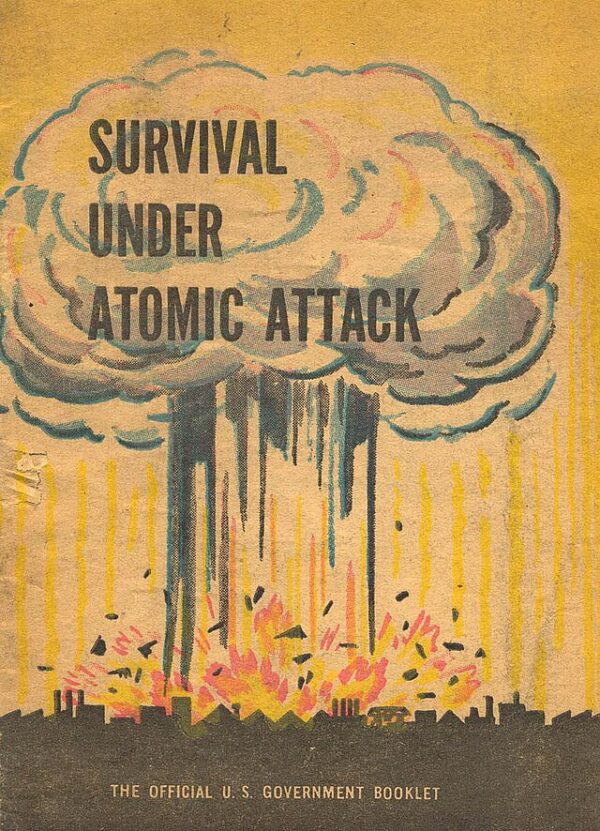On November 9, during the height of Cold War tensions between the United States and the Soviet Union, NORAD (North American Aerospace Defense Command) computers and the Alternate National Military Command Center at Fort Ritchie, Maryland, sounded a chilling alarm. The automated systems detected what appeared to be a massive Soviet nuclear strike heading toward North America, triggering an immediate and intense response.
This alert, known as a “false alarm incident,” highlighted how close the world came to nuclear catastrophe due to technological limitations and misinterpretations of data in the early-warning systems. The Cold War era was marked by a constant state of readiness, with both superpowers maintaining thousands of nuclear weapons aimed at each other. The smallest trigger could potentially ignite a global conflict, leading to mutually assured destruction. The events of November 9 underscored this precarious reality.
Detection of a “Nuclear Attack”
The NORAD computers, based at Cheyenne Mountain Complex in Colorado, were designed to monitor North American airspace for any signs of a foreign missile or bomber intrusion. In collaboration with the Alternate National Military Command Center (ANMCC) at Fort Ritchie, NORAD maintained a 24/7 vigilance to detect any threat to national security. On this particular day, the automated systems flagged what appeared to be an incoming salvo of nuclear missiles launched from the Soviet Union. In the initial moments, military officials were faced with what looked like the beginnings of a full-scale nuclear attack.
The detection system relied heavily on both satellite data and ground-based early-warning radar stations spread across North America and in various strategic locations worldwide. These systems would be the first to spot any missile launch, sending real-time information to command centers like NORAD and the ANMCC. Upon identifying what seemed to be a massive strike, both centers went into high alert, preparing for the worst.
Analyzing the Threat
With the threat detection underway, the military’s first priority was to verify the authenticity of the information. The stakes were incredibly high, as any retaliation would involve launching nuclear weapons in response to an attack that could devastate both nations. To confirm the nature of the threat, officials swiftly initiated standard operating procedures, which included cross-referencing satellite data with information from ground-based radars. The primary objective was to determine whether there were actual Soviet missiles in the sky or if the alarm was a result of some kind of malfunction or misinterpretation by the system.
During this phase, raw data from the Defense Support Program (DSP) satellites, designed to detect heat signatures from missile launches, were examined carefully. In conjunction, the Ballistic Missile Early Warning System (BMEWS) radars were checked to verify if they, too, detected any physical missile traces. The radar stations were crucial in distinguishing between real incoming objects and false readings that might arise from sensor malfunctions, software glitches, or environmental factors like solar flares.
The Cancellation of the Alert
After a tense period of scrutiny and analysis, it became evident that no actual missile launch had taken place. The supposed attack was a false alarm caused by technical errors within the detection systems. As soon as this was determined, the alert was canceled, and officials stood down from their high-alert posture.
The cause of the false alarm was later attributed to various technical issues that affected the reliability of early-warning systems during that period. False readings could be triggered by something as simple as minor computer glitches, anomalies in satellite data, or misinterpretation of radar returns. In this instance, the U.S. government avoided what could have been a catastrophic decision to launch a retaliatory strike based on erroneous data.
Lessons Learned
The November 9 incident underscored the fragility of the systems designed to prevent a nuclear war between superpowers. It highlighted the dangers of reliance on technology without human oversight and the critical importance of verification in situations involving nuclear arsenals. The incident prompted further investment in improving detection technology, increasing accuracy, and implementing fail-safes to prevent similar occurrences in the future.
While the event never escalated beyond the command centers, it served as a sobering reminder of how the Cold War’s “mutually assured destruction” doctrine made the world vulnerable to unintended conflict.






